UC Gardening Blogs
If Varroa Mites Are Bugging You...Coming Soon: UC Davis Course and WAS Presentation
If you're a beekeeper and varroa mites are bugging you--to the point whether you wonder if you're...
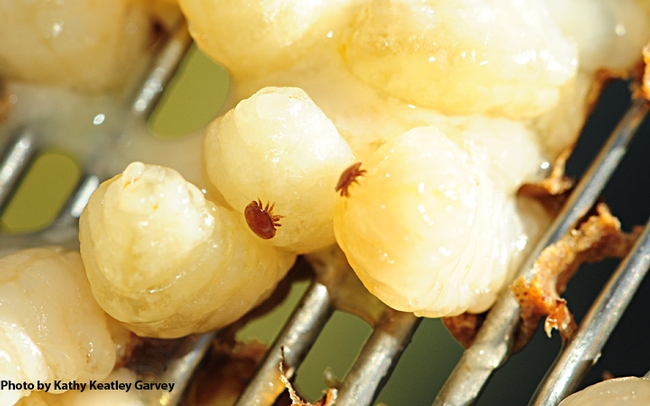
Varroa mites on drone pupae. (Photo by Kathy Keatley Garvey)
Citrus Greening Disease Quarantine Extended
Alert from CDFA Plant Health and Prevention Services The California Department of Food and...
A Couple More Things I’ve Learned
As I've said before, you can learn an awful lot from working at a Farmers' Market booth. There are shortcuts and long cuts that we all go through when growing plants in Solano County. I've heard about growing veggies, for instance, upside down, right side up, and planting tomatoes sideways! The “tried and true” places to purchase seeds and plants, plus the places where “not to go”. One thing for sure though, is there as many ways to garden as there are gardeners. But still, some questions still are “stump the chump” originals! Some of the better ones follow:
“What is mushroom compost?” The first thought is compost made for mushrooms – beep, wrong answer. Mushroom compost is “regular” compost in which mushrooms have been grown; nothing in the Sunset Books about that subject. This can be purchased at some full service garden centers or purchased by mail or over the Internet. That question bothered until I got home and goggled it.
“Where can I buy mushroom seeds?” Well, it appears that mushrooms don't have SEEDS but spores, you can't. The sources I found online suggested buying mushroom growing kits only. Perhaps the local mushroom society (and yes, there is a mushroom society) can help you with that if you didn't want to buy one of the commercial kits on the market.
The most popular question is dealing with tomatoes, and lately, summer squashes. The question goes something like this: “My tomatoes (squashes) were growing so well and now the tomatoes are turning brown or black and rotting. What insect is causing this?” Well, the problem is NOT an insect so hold up on the insecticides! It has to do this watering, temperature, and calcium. BLOSSOM END ROT is a disease resulting from deficiency of calcium due to uneven water moisture in the soil. This deficiency occurring because with our recent extremely hot days, the transpiration rates of the plants can vary due to soil temperature and moisture in the soil. This in turn affects the amount of calcium carried through the plant and out to both the leaves and fruit; because the uptake of calcium is limited in fluctuating wet and dry soils conditions, the plants should be kept consistently watered. Mulching the planting areas and using either drip irrigation or watering frequently from below will help kept this problem at bay. Cleaning the plant of the rotted fruit will keep additional diseases and problem such as fungi.
A suggestion from Patrick Greenwald (2013), Missouri Botanical Kemper Demonstration Gardens, is to test the soil the following year to check on soil calcium and amend if necessary to eliminate this problem.
And please remember that if you're hot, your dog or cat is probably pretty warm too.
Susan Cobey: Part of WSU Team That Is 'Building a Better Bee'
"Girls, where's your mother?” It's August, 2007 and bee breeder-geneticist Susan Cobey,...
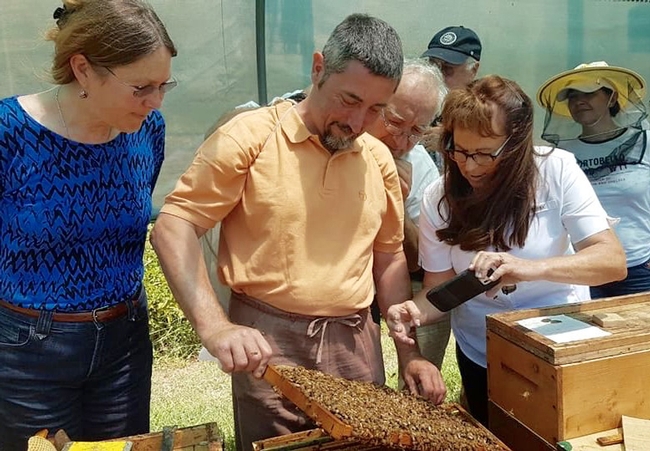
WSU bee breeder-geneticist Susan Cobey (far left) and California commercial queen bee breeder Jackie Park-Burris watch as Manuele Cantoni, Italian queen breeder, opens a hive. This photo was taken last summer in Bologna, Italy.
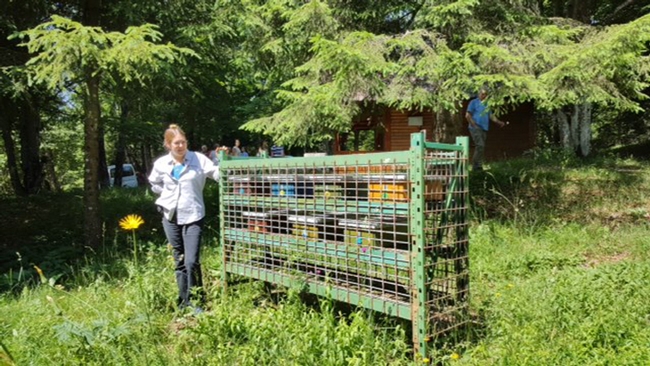
WSU bee breeder-geneticist Susan Cobey stands in the carnica apiary of Stane Plut in southern Slovenia. The caged nucs are bear-proof. Nucs, or nucleus colonies, are small honey bee colonies created from larger colonies.
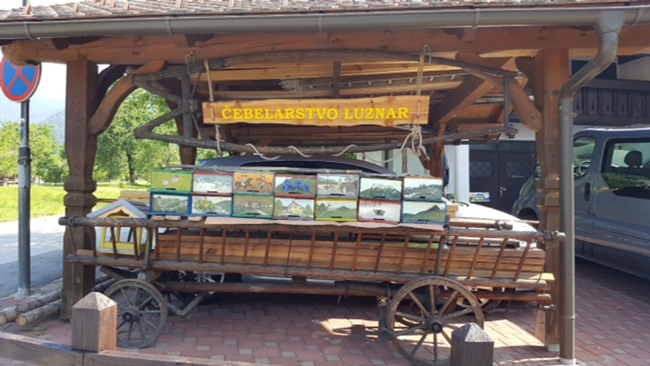
A trailer of old, empty Slovenia bee hives is being used for yard art. This photo was taken in front of the house of Erik Luznar in Slovenia. The WSU team collected in his apiary. (Photo by Jackie Park-Burris)
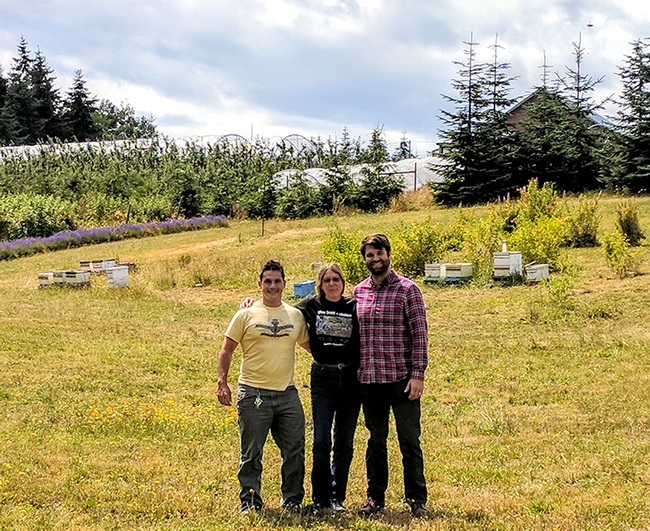
UC Davis staff research associates in the Elina Lastro Niño lab recently enrolled in one of Susan Cobey's queen bee insemination workshops on Whidbey Island, Washington state. From left are Bernardo Niño, Susan Cobey and Charley Nye.
Beware of Poison Oak
Summer is a great time for outdoor activities like camping, hiking, and backpacking. During your...
![Poison oak leaves and flowers. [Jack Kelly Clark]](http://ucanr.edu/blogs/UCIPMurbanpests/blogfiles/46190.jpg)
Poison oak leaves and flowers. [Jack Kelly Clark]
![Autumn colors of poison oak leaves. [Jack Kelly Clark]](http://ucanr.edu/blogs/UCIPMurbanpests/blogfiles/46191.jpg)
Autumn colors of poison oak leaves. [Jack Kelly Clark]



